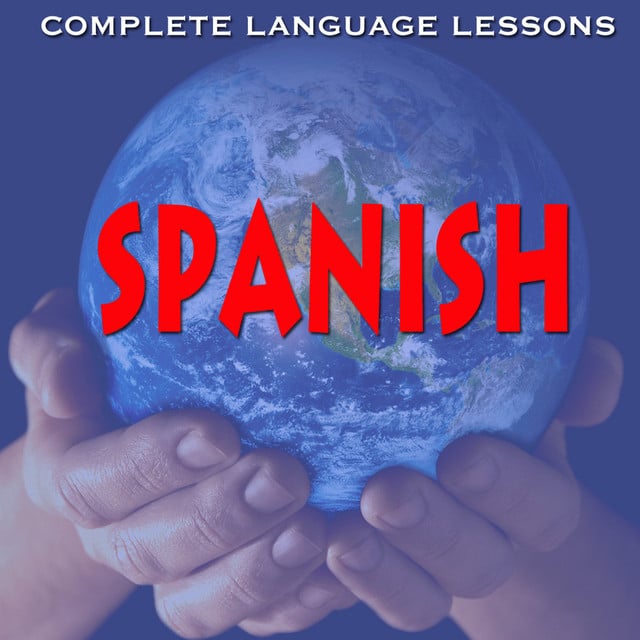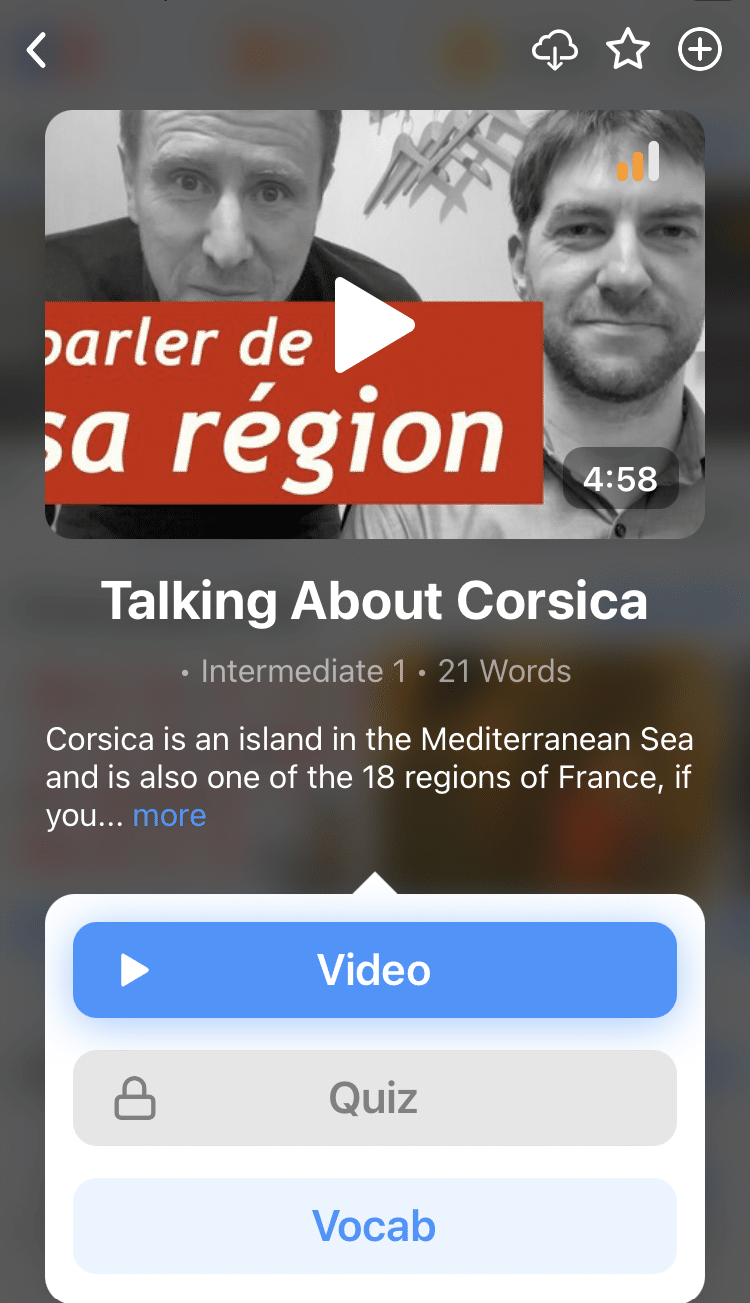
How to Use Spotify for Language Learning
Most people think of Spotify as a place to go to listen to music and podcasts.
But did you know that the popular streaming service is also home to a plethora of language learning content?
It’s true, so we wrote this post to tell you about four powerful ways that you can use Spotify for your language learning needs.
Read on to completely change the way you think about Spotify!
Contents
- 1. Make the Most of the Spotify Music Selection
- 2. Use Spotify Language Courses
- 3. Listen to Authentic Spotify Content
- 4. Practice Speaking with Spotify by Mirroring Native Speakers
- And One More Thing...
Download: This blog post is available as a convenient and portable PDF that you can take anywhere. Click here to get a copy. (Download)
1. Make the Most of the Spotify Music Selection
We might have mentioned a time or two that listening to foreign language songs is a great way to learn the language.
Songs have a way of getting into our long-term memory better than any other medium. They help us to hear and learn grammar, pronunciation and vocabulary naturally and have a way of making us sound fluent faster. They make language easier to remember.
Yes, you can find every song by Ed Sheeran and Lady Gaga on Spotify, but why not mix it up with some cool tunes in your target language?(“Despacito,” anyone?)
Songs are such great language sources that you just can’t leave them out of your learning routine.
But how do you get to them?
We’ve got some suggestions to find the best ways to find the perfect tunes for your playlist.
Forget artists and song titles
This isn’t your run-of-the-mill Spotify search where you only need to type the title of the song or the artist. You might not even be familiar with many songs or singers in the target language.
So the best thing you can do is use the target language in your search string. For example, if you’re doing a search for Italian songs, you can use the general term “Italian” or “Italy” and type in phrases like:
- “Italian songs”
- “Italian playlists”
- “Italian singers/artists”
- “Italian classics”
- “Best Italian”
- “Classic Italian”
The idea here is to pair your target language with common search terms. It’ll tease out relevant foreign language songs, artists, albums and playlists. This is really a general search, sort of acquainting you with the landscape of what’s available.
Don’t worry if you feel like you’re sort of simply nibbling on the sides. The next tip will take care of that.
Follow the trail: Let one artist or song lead you to a thousand others
In reality, you’ll probably only be using the previous search technique once or twice. Spotify is very proactive in offering you song after song after song related to the one you’re currently listening to. So you can simply let Spotify lead the way and automatically find songs you might be interested in. Just tap and follow the trail.
Found an Italian artist that you love? Spotify will give you a list of other songs by the same artist. It’ll also let you see other songs in the same album. And just to make your day, if you scroll down, you have the “Related Artists” section where Spotify identifies singers of the same genre.
And if you want to get in-depth with a certain song, looking up the song’s music video is a great way to get a sense of the story the music is telling. If you’re lucky, the video will also offer captions, so you can read along to further your comprehension.
Use the “Viral 50 by Country” feature
Go to Spotify’s “Browse” section, and in there you’ll see an icon labeled “Charts.” Tap on that and you’ll be presented with a page featuring the “Viral 50 by Country” option. Tap on that, and what do you get?
Well, only the top 50 songs that have exploded online—categorized by country. (Spotify has a special algorithm to determine this list.)
So you’re given the countries in alphabetical order. For the language learner, this should already alert you to scroll down to the country where the target language is spoken.
If you’re learning Japanese, scroll down to Japan and tap on the square picture representing the country. You’ll then see the list of the most viral songs in Japan at the moment. Of course, the list will include your perennial and international favorites—your Bruno Mars and Beyoncé—but a large part of it will be local talents; artists producing hit songs in their respective countries.
The list is a goldmine for language learners! By employing the previous technique of “following the trail,” you can find plenty of songs in the target language.
Create your own language-specific playlists
We’ve already talked about finding user-generated playlists, now let’s talk about creating your own language learning playlist.
Spotify gives you ultimate control over your songs. While searching for foreign language music, you can make a playlist of the songs that you like as you go along. Simply long press on the song and select “Add to Playlist.” You’ll have the option of adding songs to existing ones or make a new program with just your favorite foreign language beats.
A tip on titling your playlist, make sure the target language is clearly specified. So if the list is about Mandarin songs, then make sure “Mandarin” is in the title (eg. “Easy Mandarin Songs for Language Learners), so others would know what to expect.
And, just as a “thank you” to all the folks who shared their own language playlists and made your life a little easier, you can make your own playlist public too. Go to “Your Library” and tap on “Playlists.” Long press the program you want others to see and choose “Make Public.”
You can even make a playlist collaborative, allowing your language-learning friends to add songs that they think would benefit everybody. Again, just long press on the playlist and choose “Make Collaborative.” Anybody who follows your list can make changes to it. Just another way for language learners to help each other out.
2. Use Spotify Language Courses
Just to prove that the platform goes beyond music, believe it or not, Spotify itself sponsors language learning apps and programs.
Go to “Browse.” You know, that’s where you usually go when you want to search for songs via genre. You’ll get sections on pop, rock, hip-hop, Christian and R&B. Spotify also arranges them via mood, like “chill,” “party” or “sleep.”
Scroll down to the bottom and you’ll get a section called “Word.” Tap on it and you’ll get selections on spoken word tracks like poems, audiobooks, scary stories and guided meditation.
You’ll also find language programs that teach you not only the basic greetings but the structure, pronunciation and grammar that make a language work. And these aren’t just your “token” language courses that teach very little. They mean business here. (French, for example, has 45 hours worth of free audio lessons. Swedish has six hours.)
Other languages include: Spanish, Chinese, German, Arabic, Italian, Irish, Russian and Portuguese.
So head on over now to the “Word” section of “Browse” and listen to your heart’s content. Spotify courses are there waiting for you!
Here are some other options you should check out.
Coffee Break Languages (by Radio Lingua Network)
The Radio Lingua Network, producer of Coffee Break Languages, was launched in 2006. Their podcasts, both densely informative and professional, have won a string of European Podcast Awards and are continually upping the language podcast game.
Coffee Break Spanish, hosted by Mark and Kara, is particularly popular. Their passion for teaching shines through and when you listen to them, you immediately feel a kind of connection with those voices—which by the way, have a Scottish accent. (The company is headquartered in Scotland.)
The programs take you beyond the “listen-and-repeat” track, although it does give you plenty of time to practice the target language. In addition to language lessons, you also get interesting cultural asides, which make the programs more robust for faithful listeners. You get more than you bargained for with their podcasts, and it’ll feel like listening to friends who really want you to succeed with languages.
Presently, they have podcasts for Italian, German, Spanish and French.
Learn In Your Car (by Penton Overseas, Inc.)
As suggested by the title, these programs were created to be consumed while driving to or from work. But don’t worry, you don’t need to get a car for this one. You can be on a train platform or on a restroom queue during halftime and still engage in a little language learning.
Penton Overseas Inc. offers a slew of programs that are specifically targeted to vocabulary and verbs. In addition to the “Learn in Your Car” series, they also have the “Vocabulearn” series which teaches you words, nouns, adjectives, adverbs, prepositions and expressions in the language. Their “Verbs 101” programs teach you conjugation principles and patterns as well as tenses.
Penton offers free lessons for Spanish, French, German, Italian, Mandarin, Korean, Vietnamese, Arabic, Japanese, Hebrew, Swedish, Tagalog, Ukrainian, Polish, Portuguese and Swahili.
Learning Language Company
Of the language programs offered here, this one has the slimmest of pickings—offering just three languages: French, Spanish and English.
The three programs do have different flavors and approaches, probably due to the fact that different folks developed these courses. The French program has a more grammatical approach, with tracks tackling lessons on nouns, regular and irregular verbs, adverbs and conjunctions. The Spanish program is more topically arranged, with tracks that teach vocabulary related to animals, clothes, days of the week, numbers, etc.
The English course, for its part, is quite advanced and would be perfect for those learning the subtleties of written English, having tracks that explain the uses and nuances of the comma, colon and semi-colon, for example.
Complete Language Lessons
If you’re learning Spanish, French, German, Italian, Mandarin, Cantonese, Japanese, Portuguese, Norwegian, Swedish, Russian, Polish, Arabic, Vietnamese, Finnish, Czech, Bengali, Turkish, Swahili, Nepali, Cambodian, Tagalog, Thai, Bulgarian, Hebrew or Farsi—then you’re in luck.
Complete Language Lessons has you covered! And they’re all free! Admittedly, they’re not the full-blown programs like a paid course, but they do a mighty job of starting you off right. You learn the basics for each of the languages mentioned. You get the fundamentals, the basic grammar rules and the most words and expressions.
With today’s technology, there’s really very little stopping you from learning that second or third language. The material is there. You just have to do the work.
If you’re partial to video, you can use the authentic video library of FluentU:
FluentU takes authentic videos—like music videos, movie trailers, news and inspiring talks—and turns them into personalized language learning lessons.
You can try FluentU for free for 2 weeks. Check out the website or download the iOS app or Android app.
P.S. Click here to take advantage of our current sale! (Expires at the end of this month.)
3. Listen to Authentic Spotify Content
Last but not the least, Spotify can be an excellent source for other types of authentic content.
Authentic content is defined as material that native speakers of the language consume. Programs for language learners tend to be at a slower speed and have modified content to increase the comprehension of the listener.
This isn’t the case for authentic materials. Since the resource is geared towards native speakers, it’s a great opportunity to tune your ears to the language spoken at a natural speed and hear vocabulary in context.
Find the perfect foreign-language podcast
To search for podcasts in your target language, simply type the language in “Search.” Spotify will then generate everything from songs, playlists, artists and albums that contain your search term.
Scroll down to the podcast section and take your pick. For example, a “Spanish” search will get you “HabloGeek”—a Spanish-language podcast that discusses everything technology-related. A “German” search would give you “Machen”—a German podcast on business and startups.
A great resource for foreign language podcasts is the Australia-based SBS (Special Broadcasting Service) Radio, which has programs, news and interviews in a whopping number of languages. Just type “SBS” plus the language you want to listen to. They have tracks for 74 languages, including Finnish, Dutch, even Somali and Khmer!
Podcasts can really get those linguistic muscles of yours stretched and pushed to the next level. They immerse you in the language and you get to work with it the same way native speakers do.
If you want to hear music or authentic audio content with the help of language learning tools such as subtitles, you can also try an online program such as FluentU.
FluentU takes authentic videos—like music videos, movie trailers, news and inspiring talks—and turns them into personalized language learning lessons.
You can try FluentU for free for 2 weeks. Check out the website or download the iOS app or Android app.
P.S. Click here to take advantage of our current sale! (Expires at the end of this month.)
Browse the selection of foreign-language audiobooks
Besides podcasts, another type of authentic material on Spotify are those audiobooks in the target language.
English learners will have an awesome time with classics like “The Adventures of Huckleberry Finn,” “The Great Gatsby,” “Pride & Prejudice” and “Great Expectations.”
To search, simply use the target language as a search term (e.g. “German”) and add the term “audiobooks.” For example, searching for “German audiobooks” will show you a playlist that includes “Der kleine Prinz” (“The Little Prince”).
There are also audiobooks in Spanish like “El gato con botas” (“Puss in Boots”) and “Le Petit Prince” (“The Little Prince”) in French.
To get the most out of these foreign language audio, try to get hold of a digital or printed copy so you can read along.
Read along and read aloud so your mouth and ears can get accustomed to the language. You’re going to look and sound like a fool again, but do it anyway.
4. Practice Speaking with Spotify by Mirroring Native Speakers
Using Spotify for speaking practice through mirroring of native speakers involves a few steps:
Look for podcasts, music or spoken word content in your target language. Choose content where native speakers are speaking naturally and a little slow. If they’re going too fast, you’ll never keep up at first.
Pay close attention to the pronunciation, rhythm and intonation of the native speakers. Try to mimic their speech patterns as closely as possible. Try looking in the mirror or recording yourself on your smartphone as you do this. It may feel cringe-worthy, but it helps to be able to see yourself speaking.
Pause the audio frequently to repeat what you’ve heard aloud. Focus on imitating the pronunciation and intonation as accurately as you can.
Use the voice memo app on your phone to record your own speech. Compare it to the native speaker’s speech to identify areas where you can improve.
I bet in the course of an hour, you’ll vastly improve your pronunciation. It’s a great warm up for the mouth and lips, and it gets you more comfortable speaking out loud.
Here’s an informative video that goes over the basics of the shadowing technique in English (although the same advice goes for every language):
Didn’t think there would be so much language learning stuff on Spotify, did you?
So download the app now and find out why this resource is your dream come true.
Download: This blog post is available as a convenient and portable PDF that you can take anywhere. Click here to get a copy. (Download)
And One More Thing...
If you dig the idea of learning on your own time from the comfort of your smart device with real-life authentic language content, you'll love using FluentU.
With FluentU, you'll learn real languages—as they're spoken by native speakers. FluentU has a wide variety of videos as you can see here:
FluentU has interactive captions that let you tap on any word to see an image, definition, audio and useful examples. Now native language content is within reach with interactive transcripts.
Didn't catch something? Go back and listen again. Missed a word? Hover your mouse over the subtitles to instantly view definitions.
You can learn all the vocabulary in any video with FluentU's "learn mode." Swipe left or right to see more examples for the word you’re learning.
And FluentU always keeps track of vocabulary that you’re learning. It gives you extra practice with difficult words—and reminds you when it’s time to review what you’ve learned. You get a truly personalized experience.
Start using the FluentU website on your computer or tablet or, better yet, download the FluentU app from the iTunes or Google Play store. Click here to take advantage of our current sale! (Expires at the end of this month.)












